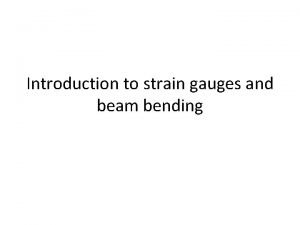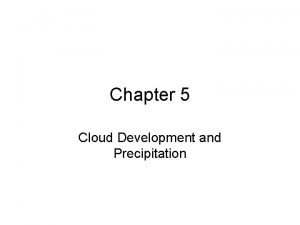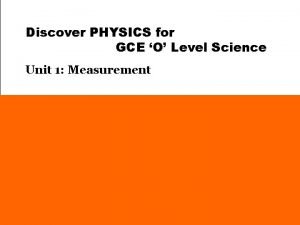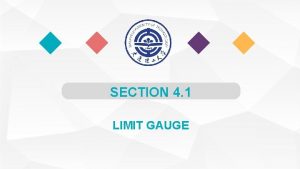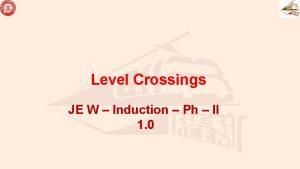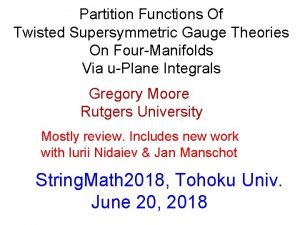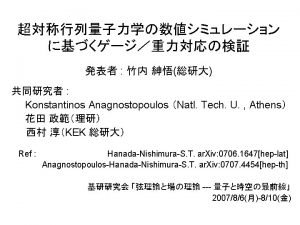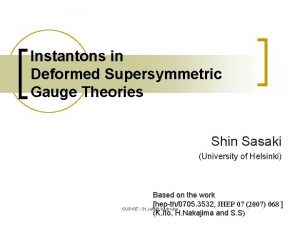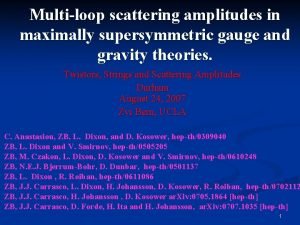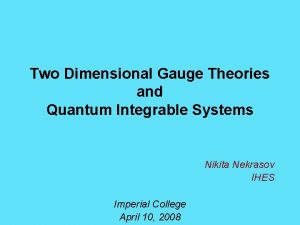Quantum properties of supersymmetric gauge theories Speaker Alessandro









- Slides: 9

Quantum properties of supersymmetric gauge theories Speaker: Alessandro Banaudi Tutor: Alberto Santambrogio Co-tutor: Andrea Mauri

What is a supersymmetric gauge theory? Gauge Theory + Quantum field theory which describes elementary particles and their fundamental interactions. The fields considered are invariant under gauge transformations. Examples: QED, QCD, . . . Supersymmetry A space-time symmetry that relates two classes of elementary particles: bosons (integer-valued spin) and fermions (halfinteger-valued spin). PARTICLES SUPERPARTICLES BOSONS FERMIONS BOSONS 2

Why are these theories interesting? • Physics beyond Standard Model. • Cancellations between bosonic and fermionic divergences. • Large amount of symmetries. • Some subsectors are exactly solvable (integrable). • A possible springboard to quantum gravity through Ad. S/CFT correspondence. 3

The central role of N = 4 SYM is the pioneer of the supersymmetric gauge theories. • It is a maximally supersymmetric gauge theory. • It is a quantum conformal field theory. • It is integrable in some limits. • Its strong coupling regime corresponds to the supergravity limit of the string theory in a Ad. S background. 4

N = 4 SYM is the starting point. We are mainly interested in 2 different theories: • N = 2 SCQCD (4 dimensions); • ABJM theory (3 dimensions). N = 4 SYM N=2 SCQCD Ad. S/CFT ABJM theory Ad. S/CFT Gravity 5

The research project N = 2 SCQCD • Computation of scattering amplitudes. • Properties of amplitudes and symmetries. • Relations amplitudes/Wilson loops. ABJM • Computation of scattering amplitudes. • Computation of the dilatation operator. • Integrability. 6

In the computation of scattering amplitudes, we use the formalism of Feynman (super)diagrams. • We read from the action the Feynman rules for propagators and vertices of theory; • We build all the possible diagrams (until the perturbative order considered) for the considered process; • We compute one by one the diagrams. 7

Main goals • In N = 2 SCQCD, we will compare some properties of scattering amplitudes with the corresponding ones in N = 4 SYM and in QCD. • In ABJM, we will compute the dilatation operator at 6 loops in order to test a recent proposal based on integrability. 8

Thank you for your attention 9
